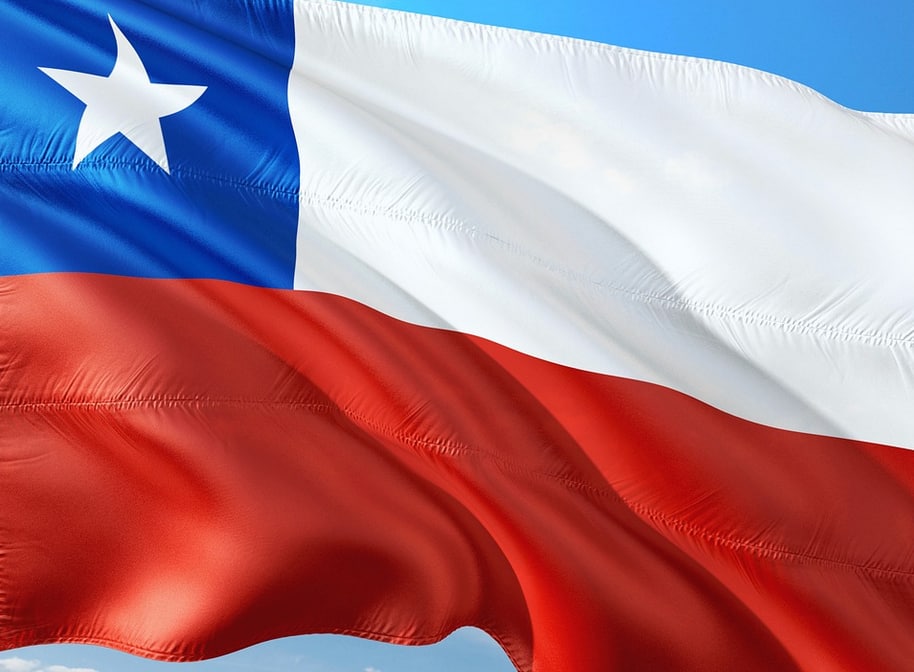Chile gets $280m of quake cat swaps to go with $350m cat bond. ILS funds play key role

Chile has secured $630 million of earthquake insurance cover through its World Bank IBRD issued arrangement, with $280 million of catastrophe swaps to add to the recently priced $350 million IBRD – Chile 2023 catastrophe bond.
As we reported earlier, the Chile earthquake catastrophe bond has now priced, to offer an upsized $350 million of parametric quake protection to the country, while the notes priced at the low-end of initial guidance, for a roughly 7% drop over the marketing of the securitized deal.
It’s notable that insurance-linked securities (ILS) funds played a key role, taking some 76% of the IBRD cat bond notes on offer from this transaction.
But, at the same time as the cat bond was issued, the World Bank and the arrangers of the deal have secured $280 million of additional coverage using a catastrophe swap structure.
“By simultaneously offering the risk to both bond investors and to insurance and reinsurance companies in swap form, the World Bank and Chile were able to access a larger amount of risk bearing capacity than either market could offer on its own,” the World Bank explained.
It makes this Chile earthquake deal the largest single country catastrophe bond and swap transaction ever executed by the World Bank.
The arrangement provides Chile with financial protection against the potentially disruptive economic impacts of earthquakes and resulting tsunamis, the World Bank noted., with funds able to be readily available in the case of disaster.
This protects Chile’s fiscal budget, and lowers the chance that it needs to issue debt in an earthquake’s aftermath.
The arrangement covers Chile for three-years on a parametric insurance basis, with the parametric trigger calibrated against an earthquakes location and severity.
To read more details on the structure of the Chile catastrophe bond transaction and its parametric trigger please see our Deal Directory entry.
Notably, this IBRD cat bond for Chile becomes the first catastrophe bond listed on the Hong Kong Exchange (HKEX).
It is also the IBRD’s nineteenth catastrophe bond and the second for Chile, as the country benefited from cover under a multi-country arrangement for the Pacific Alliance issued in 2018.
It’s also notable that this is only the second time the World Bank has executed on catastrophe bonds and catastrophe swaps at the same time, the other case being for the Pandemic Emergence Financing Facility (PEF), with this strategy helping to maximise the protection available to Chile.
Mario Marcel, Minister of Finance, Republic of Chile, explained, “This constitutes a new step made by Chile towards a better protected and resilient public finances, in the face of large-scale natural catastrophe events, such as an earthquake, and is part of a comprehensive strategy that reinforces our commitment to fiscal responsibility, which has been highlighted by different local and international agents.”
We are pleased to have partnered with the Government of Chile on this important transaction. It is another example of how the World Bank mobilizes private capital for development and supports disaster risk management in our member countries,” added Anshula Kant, Managing Director and World Bank Group Chief Financial Officer. “We are encouraged by the extremely strong demand for the transaction from both bond investors and insurance counterparts who have shown their support for a more resilient future for the people of Chile.”
“Chile is one of the most seismically active countries in the world, experiencing some of the largest earthquakes ever recorded,” Carlos Felipe Jaramillo, World Bank Vice President for Latin America and the Caribbean also said. “Through the intermediation of the World Bank, this CAT bond allows Chile to transfer major earthquake risks to the capital markets while enabling the authorities to respond quickly to the needs of citizens when calamities strike.”
Paul Schultz, Chairman and CEO Aon Securities, a joint structuring agent and bookrunner for the deal, commented, “Aon Securities is pleased to partner with the World Bank to help the Republic of Chile return to the market for another successful transaction. We are proud to be an integral part of Chile’s broader plan to manage the financial risks of natural disasters, and we look forward to assisting with the next phase of this journey.”
Cory Anger, Managing Director of GC Securities, also a joint structuring agent and bookrunner, added, “We are very pleased to have worked with the Government of Chile and the World Bank on this important transaction which closes the protection gap and further builds momentum in transfer of global public catastrophic risk to the capital and reinsurance markets.”
Helpfully, the World Bank has shared some details on the investors backing the catastrophe bond and the breakdown of regions those backing the catastrophe swaps are based on.
Catastrophe Bonds Investor Distribution
By Investor Type
By Geography
Asset Managers/Insurance/Pension Funds
15%
Europe
54%
ILS Fund
76%
North America
40%
Insurer/Reinsurer
3%
Bermuda
4%
Pension Fund
6%
Asia
2%
Catastrophe Swap Counterpart Distribution
Europe – 60%
North America – 36%
Bermuda – 4%
It’s notable that dedicated ILS fund managers have taken the majority of the catastrophe bond, which is not surprising given the strong demand being seen for cat bond investments at this time.
It’s encouraging to see pension funds also taking a significant slice of the Chile cat bond.
On the catastrophe swaps, it’s not clear how much was backed by capital markets, versus reinsurance firms.
For Chile this is a very strong result, as its previous cat bond under the Pacific Alliance deal from 2018 was only $500 million in size.
So with the cat swaps adding to the cat bond in this case, the $630 million of earthquake protection is a significant increase in available parametric cover for the country.
You can read all about this new IBRD – Chile 2023 catastrophe bond in the extensive Artemis Deal Directory.






